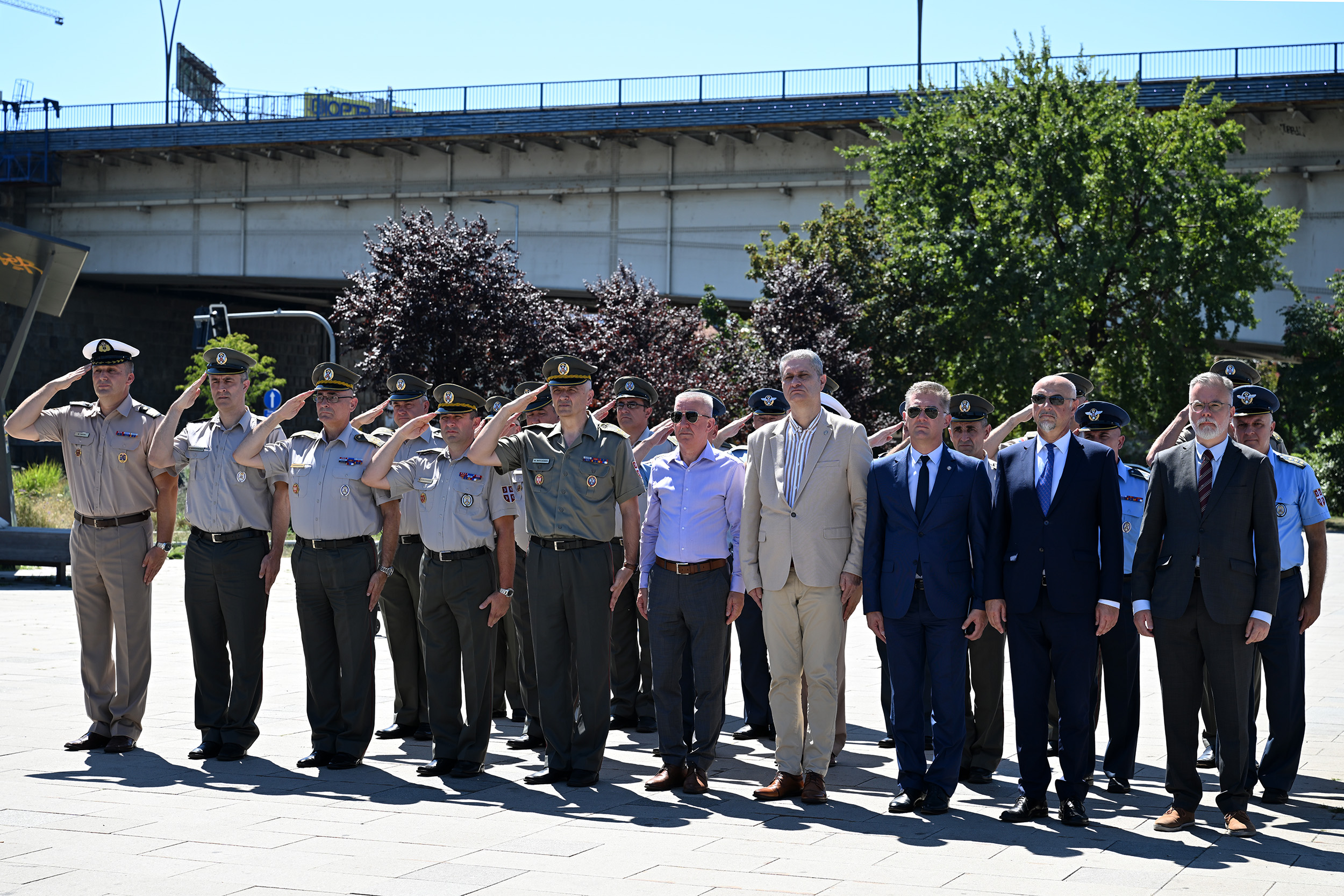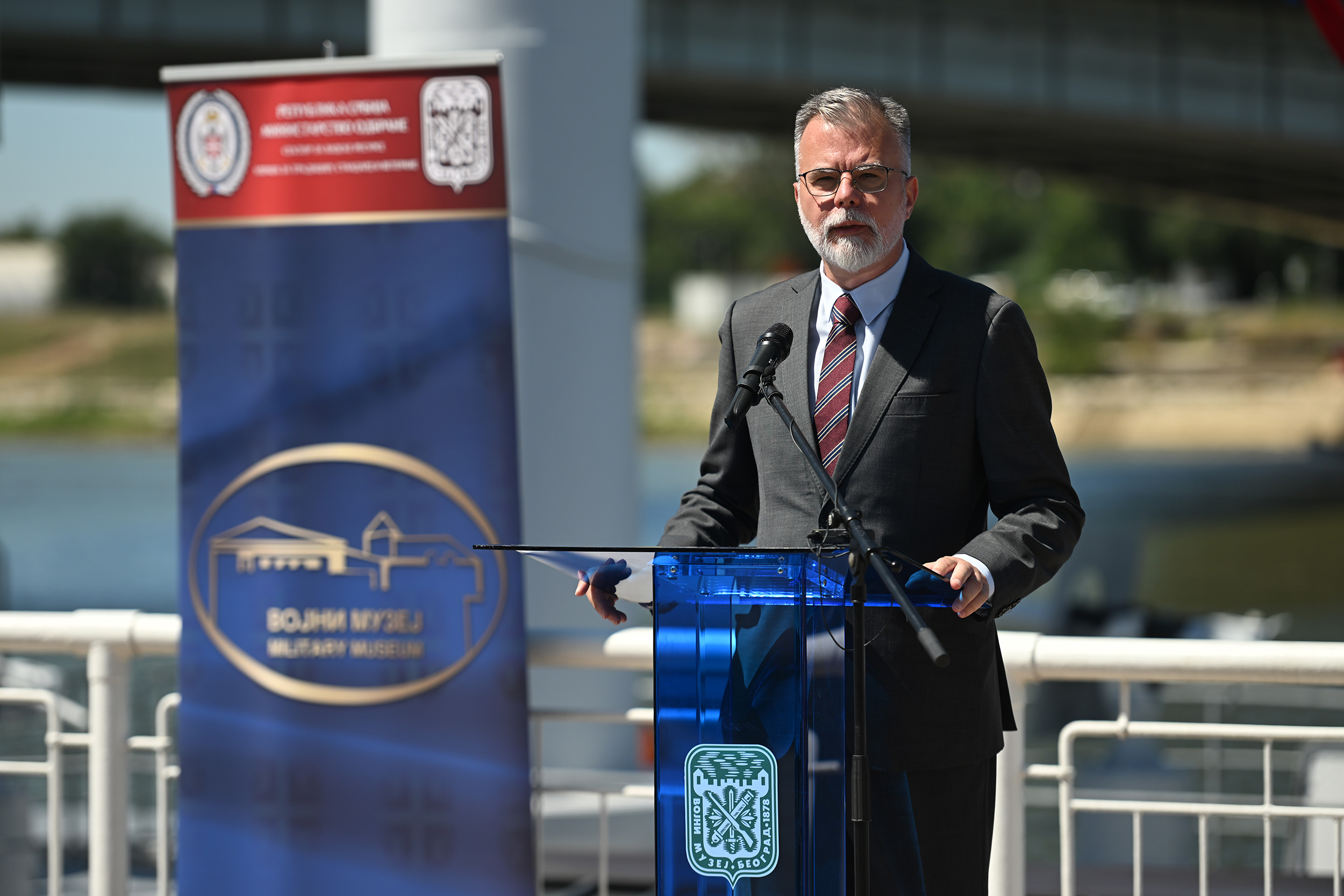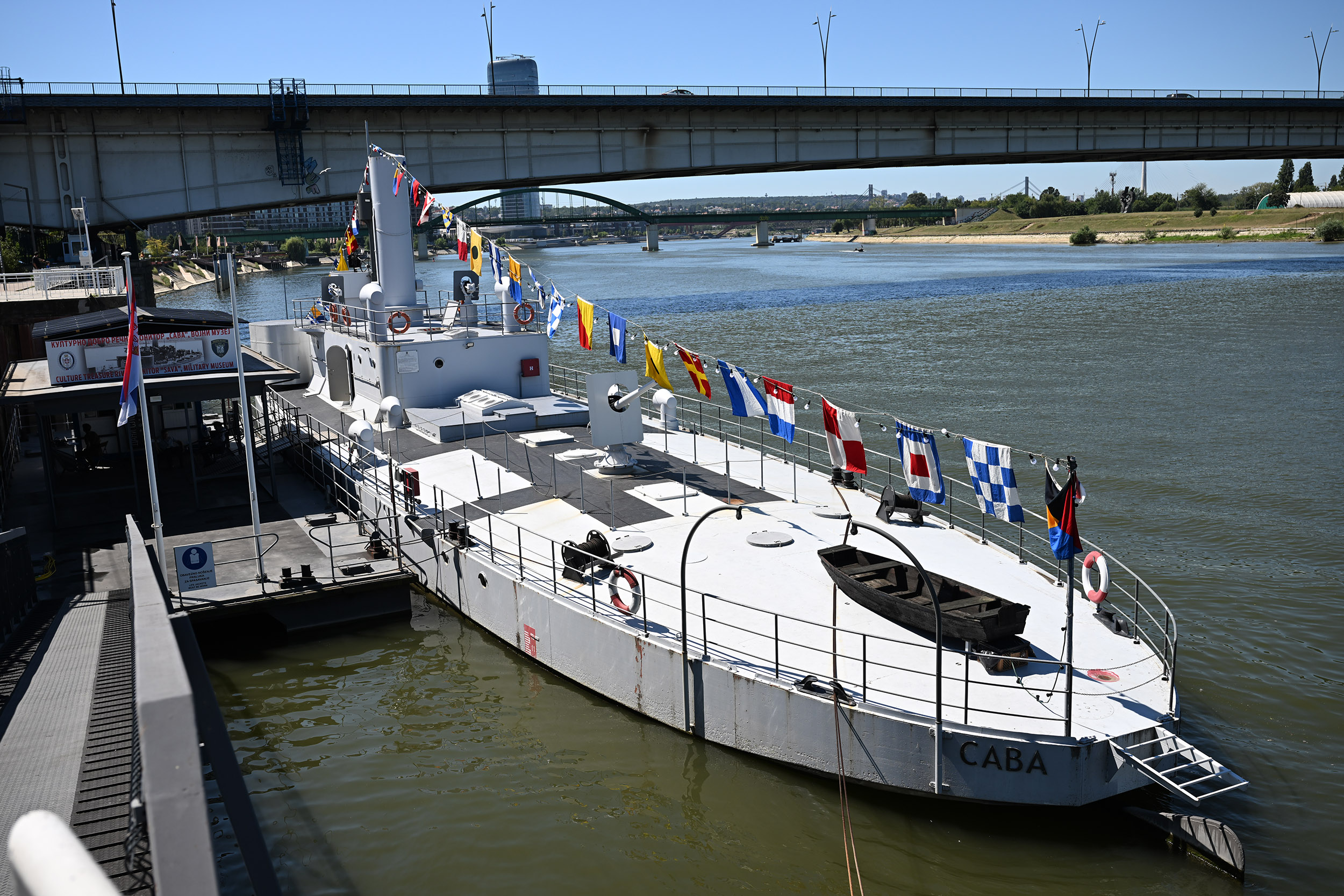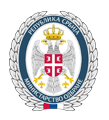28.07.2024.
110th anniversary of commencement of First World War marked
Today, the Ministry of Defence and the Ministry of Information and Telecommunications hosted a ceremony to mark the 110th anniversary of the attack on our country which started the First World War. The ceremony was held on the plateau next to the place where the river monitor Sava is anchored near Branko’s Bridge in Belgrade.
 Minister of Information and Telecommunications Dejan Ristić thanked the Ministry of Defence and the Ministry of Culture for bringing the warship Sava back on the river in excellent condition, and reminded those present that the First World War had claimed a large number of victims, but had also brought us magnificent victories in the battles of Cer, Kolubara, in the Salonica Campaign, and later in the battles for the liberation of our country.
Minister of Information and Telecommunications Dejan Ristić thanked the Ministry of Defence and the Ministry of Culture for bringing the warship Sava back on the river in excellent condition, and reminded those present that the First World War had claimed a large number of victims, but had also brought us magnificent victories in the battles of Cer, Kolubara, in the Salonica Campaign, and later in the battles for the liberation of our country.- This is a particularly important day for us, not only because it marks the 110th anniversary of the commencement of the First World War, but because it is filled with symbolism. On the one hand, it commemorates the suffering of the Serbian people and citizens of the Kingdom of Serbia in the First World War, which lasted four years, and on the other hand, it honours a series of magnificent victories won by Serbian weapons, bravery and pure, unadulterated patriotism – said Minister Ristić and asked us all to keep alive the memory of the heroes and victims of the First World War.
 Bojan Vićentić, a historian and curator at the Military Museum, said that historical and political circumstances had led to the fact that our country, the then Kingdom of Serbia, and our capital Belgrade, had been the first targets and the first victims in the Great War.
Bojan Vićentić, a historian and curator at the Military Museum, said that historical and political circumstances had led to the fact that our country, the then Kingdom of Serbia, and our capital Belgrade, had been the first targets and the first victims in the Great War.- After the Sarajevo assassination, Austria-Hungary issues an ultimatum to the Kingdom of Serbia, holding our country responsible for the assassination. The demands listed in the ultimatum were made as unacceptable as possible, so that the rejection of the ultimatum would give rise to war. The Habsburg army's plan was to attack Belgrade from the Sava and the Danube. The attack would be carried out by the Austro-Hungarian Danube Flotilla, whose main striking force consisted of river monitors and armoured warships - Vićentić said.
 One of the participants and witnesses of those tragic events, which is now the cultural asset of the Republic of Serbia - river monitor Sava, the former Bodrog, is anchored at the Sava Quay, said Vićentijević.
One of the participants and witnesses of those tragic events, which is now the cultural asset of the Republic of Serbia - river monitor Sava, the former Bodrog, is anchored at the Sava Quay, said Vićentijević.- Monitor Sava was sunk twice, served in four armies and changed more than six countries. Today it is one of the few preserved monitors in the world and has an invaluable historical value because it is one of the river warships whose artillery fire started the First World War - said Vićentić and added that the river monitor Sava was now part of the Military Museum Collection.
 As of today, Monitor Sava is open to visitors again. Entrance to the warship, as well as a tour of its interior where items that the crew used on a daily basis can be seen, are free today, on the occasion of the anniversary of the commencement of the Great War. Fans of military history and weapons can see all of this every day from 10 a.m. to 5 p.m., except Mondays, with a ticket purchased at the Military Museum or on the ship itself.
As of today, Monitor Sava is open to visitors again. Entrance to the warship, as well as a tour of its interior where items that the crew used on a daily basis can be seen, are free today, on the occasion of the anniversary of the commencement of the Great War. Fans of military history and weapons can see all of this every day from 10 a.m. to 5 p.m., except Mondays, with a ticket purchased at the Military Museum or on the ship itself.As part of the commemoration of this historic event, representatives of the Ministry of Defence promoted voluntary military service under arms and reserve officers’ training.
 The event was attended by members of the collegiums of the Minister of Defence and Chief of the Serbian Armed Forces General Staff and members of the Ministry of Defence and the Serbian Armed Forces.
The event was attended by members of the collegiums of the Minister of Defence and Chief of the Serbian Armed Forces General Staff and members of the Ministry of Defence and the Serbian Armed Forces.



